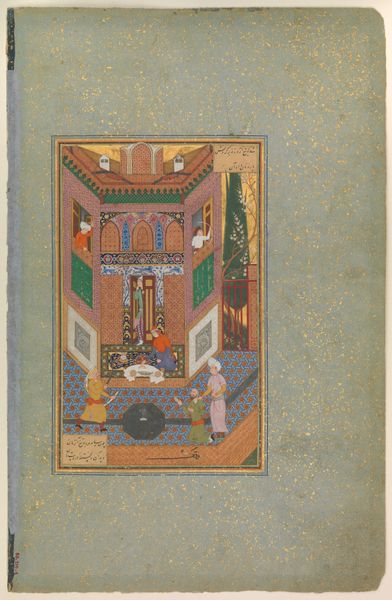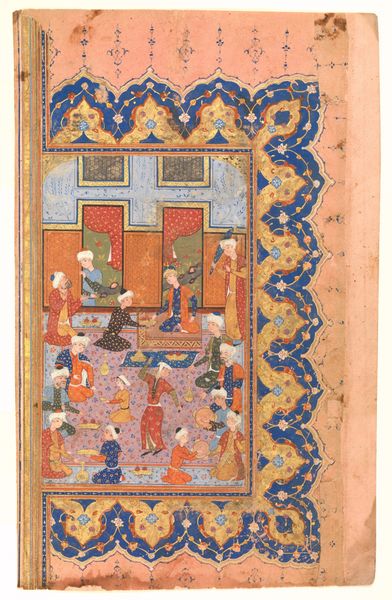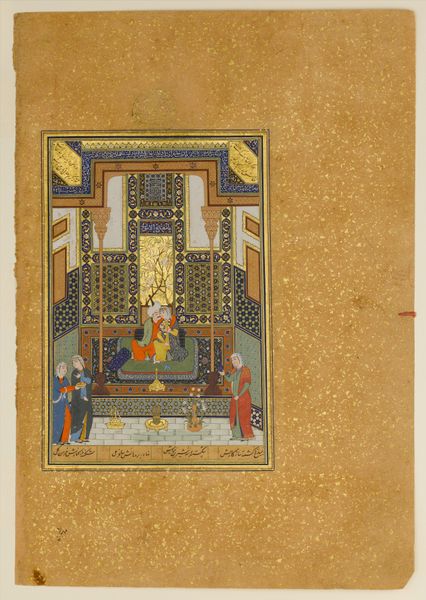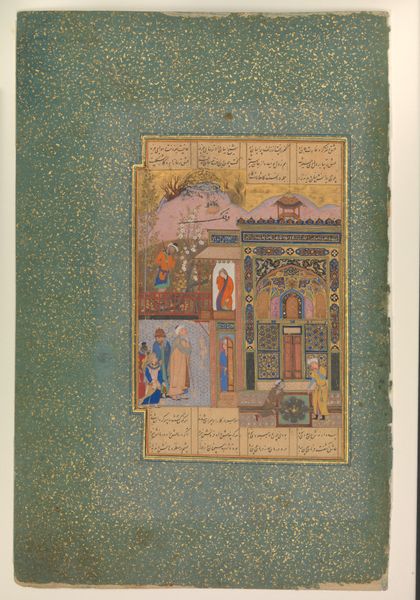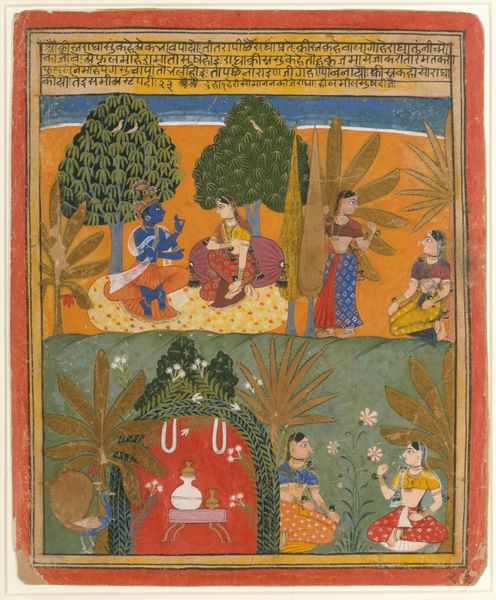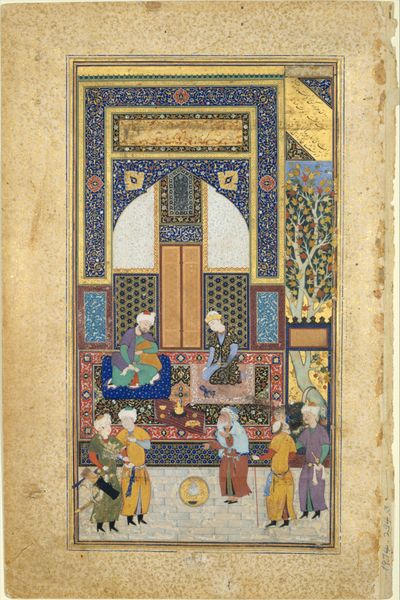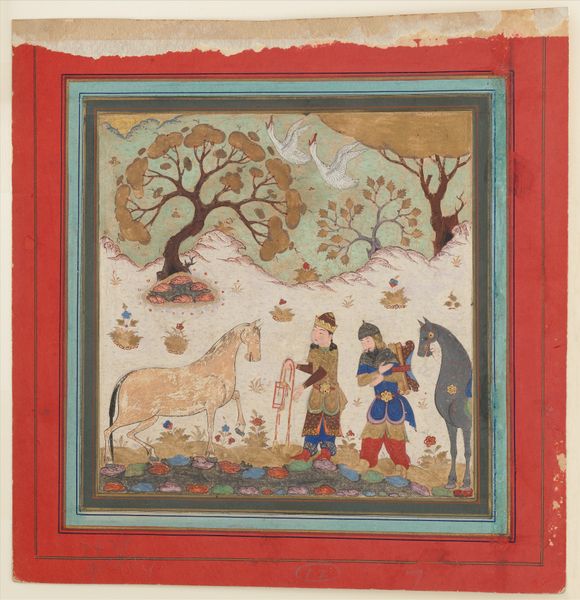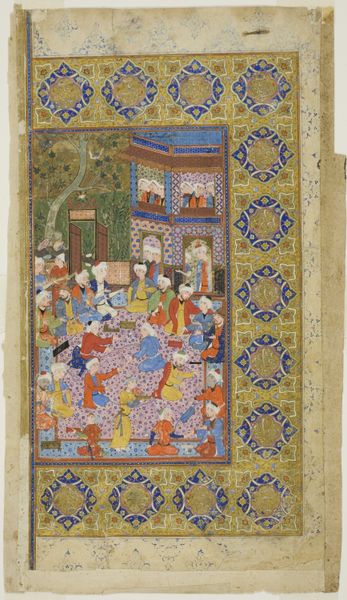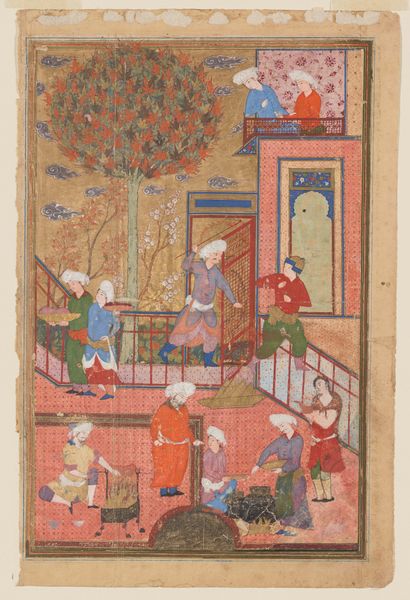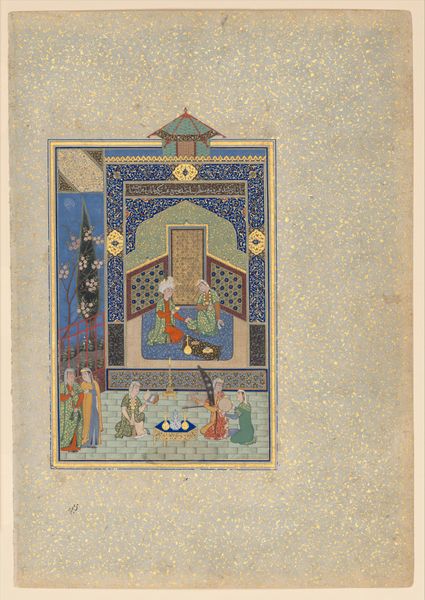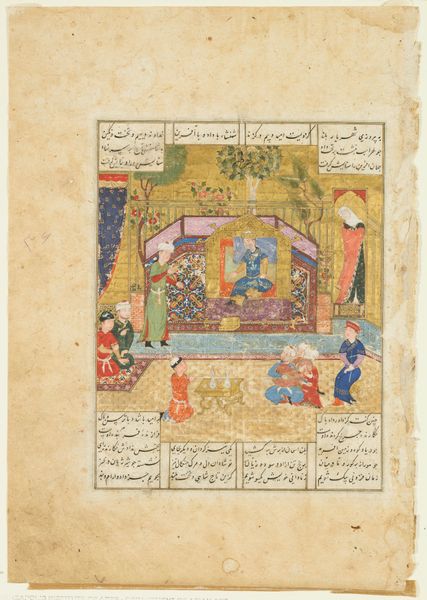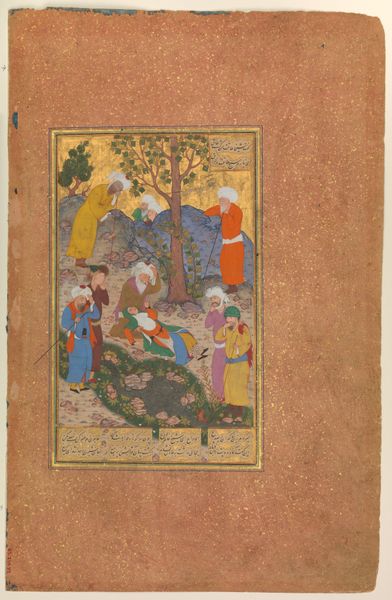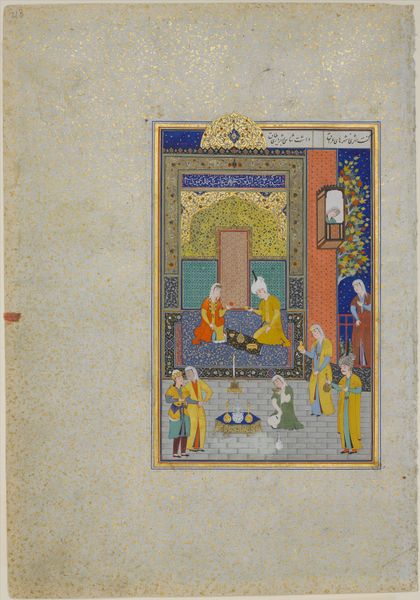
"Khusrau Parviz before his Father Hurmuzd (?)", Folio from a Shahnama (Book of Kings) 1405 - 1465
0:00
0:00
painting, watercolor
#
narrative-art
#
painting
#
figuration
#
watercolor
#
geometric
#
islamic-art
#
miniature
Dimensions: H. 8 3/8 in. (21.3 cm)
Copyright: Public Domain
Curator: Here we have a page from a Shahnama, or Book of Kings. This particular folio, dating from between 1405 and 1465, possibly depicts Khusrau Parviz before his father, Hurmuzd. The meticulous work is currently held in the collection of the Metropolitan Museum. Editor: Oh, the precision is remarkable. The miniature format, combined with such vibrant color, pulls you right into this gilded, hierarchical scene. It’s…intimate, in a way, despite the formality of the royal court. Curator: The composition’s fascinating, isn't it? All those layers, the patterned textiles and the architectural space behind create this incredibly rich texture. What do you think the labor input into crafting such a piece implies? Editor: Endless patience. I'm drawn to the materials - watercolour and ink, yes, but the gold leaf really pops. That lustrous quality screams luxury and patronage. One can just imagine artisans laboring painstakingly to realize someone else's vision. It reveals a complex social structure – artisans using rare materials to prop up the status of royalty and nobility. Curator: And that hierarchy plays out narratively, doesn’t it? There's a formality and a deference to the gestures, the poses… All rendered in such delicate lines. I keep wondering what Khusrau is thinking. Look at how still the faces seem. It lends it all a profound sense of contemplation, doesn't it? Editor: Contemplation, maybe. Or resignation? Perhaps even fear. Court life could be cutthroat; power struggles shaped not only art, but lives. It seems clear that this miniature underscores an implicit system of materials, resources and status... The question remains: whose story is truly being depicted here? Curator: That’s the intriguing ambiguity of these historical miniatures. Is this depiction about solidifying power, an aspiration for reconciliation, or maybe, merely an idealized, romantic rendering of a familial encounter? Art historians endlessly revisit these debates! Editor: For me, it also sparks thoughts around who would have consumed art like this at the time, and what it might have meant to see oneself in relation to that history. All this visual encoding gives an important window into cultural values of production, and of its consumption too. Curator: Well, I'll never look at a court scene in quite the same way. I love your ideas around materiality. Editor: And your vision opens my thinking toward interpretation beyond just materials and contexts. Let's meet at the next one.
Comments
No comments
Be the first to comment and join the conversation on the ultimate creative platform.
